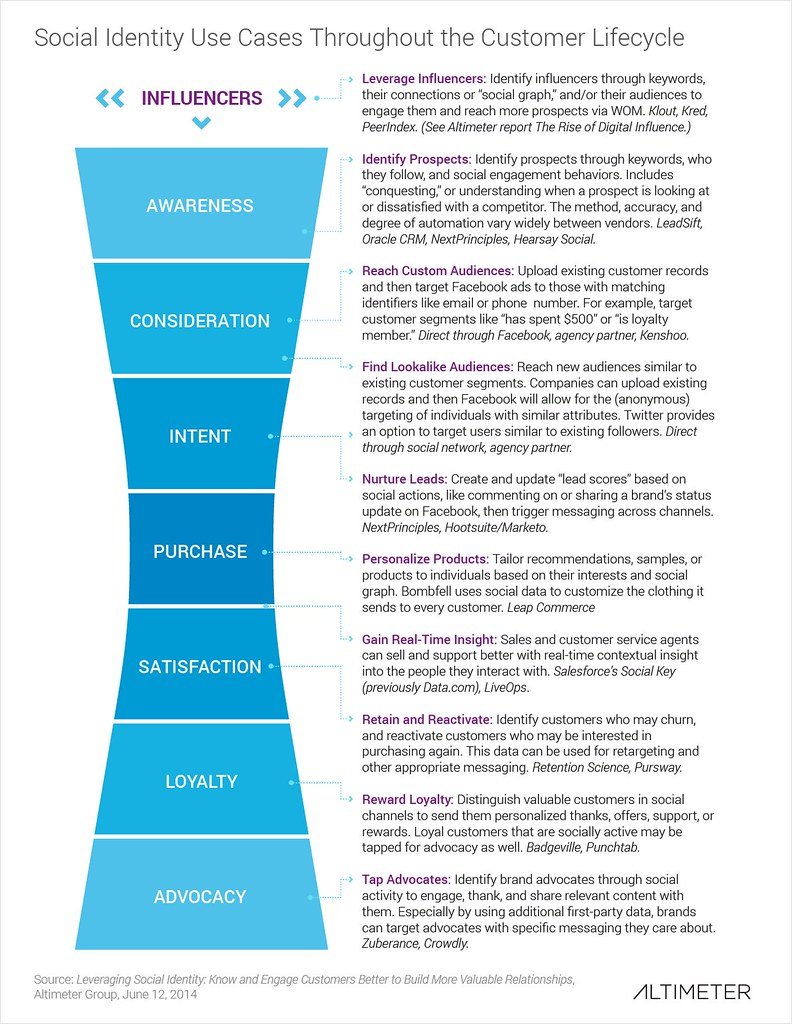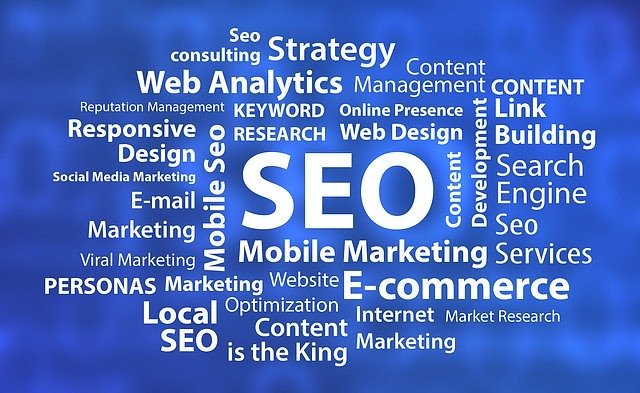Unlocking the secrets of search engine optimization (SEO) often feels like deciphering an ancient enigma, with ever-evolving algorithms that seem to be shrouded in impenetrable mystery. However, amidst this labyrinth of optimization techniques and keyword strategies, lies a hidden gem that holds immense power – the elusive user intent. Yes, dear reader, the key to unraveling the SEO enigma lies in understanding the very essence of what drives users to search, click, and engage. In this article, we embark on a fascinating journey to explore the undeniable power of user intent and its profound impact on catapulting your website to the top of search engine results. So, buckle up and prepare to be enlightened as we traverse the captivating world of user intent and its role in shaping the future of SEO.
Table of Contents
- The Mindset Shift: Understanding the Significance of User Intent in SEO
- Unveiling the SEO Enigma: How User Intent Transforms Search Rankings
- Improving User Experience: Leveraging User Intent for Optimized SEO Strategies
- Mastering the Art of User Intent: Key Recommendations for Effective SEO
- Q&A
- Closing Remarks

The Mindset Shift: Understanding the Significance of User Intent in SEO
In the world of SEO, understanding and harnessing the power of user intent is a mindset shift that can make all the difference. Gone are the days when optimizing a website simply meant stuffing it with keywords. Today, search engines have become smarter and more focused on delivering the most relevant and helpful results to users. As a result, user intent has emerged as a key factor in search engine optimization.
So, what exactly is user intent? It refers to the purpose or motivation behind a user’s search query. By understanding and catering to user intent, you can optimize your website to provide the most valuable and targeted content for your audience. Here are a few reasons why user intent should be at the forefront of your SEO strategy:
- Relevance: By aligning your content with user intent, you ensure that it is relevant to what users are actually looking for. This not only improves your visibility in search engine results pages but also increases the chances of capturing your target audience’s attention.
- Engagement: When you focus on user intent, you create content that speaks directly to your audience’s needs and interests. This leads to higher engagement levels, with users spending more time on your website, exploring your offerings, and potentially converting into customers.
- Competition: Understanding user intent can also give you a competitive edge. By tailoring your content and optimization strategies to match what your competitors might be overlooking, you can position yourself as a more authoritative and trusted source in the eyes of both search engines and users.

Unveiling the SEO Enigma: How User Intent Transforms Search Rankings
The Importance of User Intent in SEO Ranking
When it comes to search engine optimization (SEO), user intent is the key to unlocking the enigma that determines search rankings. In the ever-evolving world of digital marketing, understanding user intent has become more crucial than ever. Gone are the days when ranking high on search engine results pages (SERPs) was solely based on keyword stuffing and backlinks. With search algorithms getting smarter by the day, it’s important to focus on providing valuable and relevant content that aligns with what users are searching for.
Understanding User Intent: The Path to Optimization
Think of user intent as the compass that guides your SEO strategy. By understanding what users are looking for, you can tailor your content and keywords to align with their needs. There are four main types of user intent: informational, navigational, transactional, and commercial. Each type serves a different purpose and requires a specific approach to optimize your website accordingly.
- Informational intent: Users seeking information or answers to their questions. Optimize your content by creating comprehensive blog posts, articles, or guides that provide valuable insights and answers to common queries.
- Navigational intent: Users looking for a specific website or brand. Ensure your website is easily navigable with clear and concise headings, menus, and internal linking to provide a seamless user experience.
- Transactional intent: Users ready to make a purchase. Include strong call-to-action phrases and optimize your product pages with clear pricing, shipping information, and customer reviews to convert these users into buyers.
- Commercial intent: Users in the research phase before making a purchase decision. Provide detailed product comparisons, reviews, and pricing information to help users make informed choices.
By understanding and catering to user intent, you can enhance your website’s visibility and authority, ultimately boosting your search rankings. Remember, SEO is not just about ranking high on SERPs, but also about delivering what users are searching for.

Improving User Experience: Leveraging User Intent for Optimized SEO Strategies
When it comes to improving user experience and optimizing SEO strategies, understanding user intent is the key to unlocking the enigma. User intent refers to the underlying motivation or purpose behind a user’s search query. By delving into user intent, you can gain valuable insights into what users are looking for and tailor your content to meet their specific needs.
So, how exactly can you leverage user intent to optimize your SEO strategies? Here are a few insights to get you started:
- Research and analyze: Dive deep into keyword research and analysis to uncover the intent behind different search queries. Understand the various types of user intent such as informational, navigational, and transactional. This will help you create content that aligns with what users are seeking.
- Answer user queries: Craft your content in a way that directly addresses the questions and problems users have. Use clear and concise language to provide informative answers. By doing so, you satisfy user intent and increase the likelihood of your content ranking higher in search engine results.
- Optimize for long-tail keywords: Long-tail keywords are more specific and tend to reflect user intent more accurately. By targeting these keywords, you can attract highly relevant traffic and improve the overall user experience on your website.
- Monitor and adapt: Continuously monitor user behavior and engagement to understand how well your content is meeting user intent. Analyze metrics such as bounce rate and time on page to gauge user satisfaction. Make necessary adjustments to your SEO strategies based on these insights.
By leveraging user intent, you can optimize your SEO strategies to not only drive more organic traffic to your website but also enhance the user experience. So, dive into the fascinating world of user intent, and unlock the true power of SEO!

Mastering the Art of User Intent: Key Recommendations for Effective SEO
Key Recommendations for Effective SEO
User intent lies at the heart of successful SEO strategies. Understanding what users are searching for and tailoring your content accordingly can make all the difference in driving traffic and improving your website’s visibility. Here are some key recommendations to help you master the art of user intent:
- Keyword Research: Start by conducting thorough keyword research to uncover the words and phrases that users are using to find information related to your industry or niche. This will provide valuable insights into user intent and help you optimize your content accordingly.
- Content Optimization: Once you have identified the relevant keywords, optimize your content by incorporating them naturally throughout your website. This could include your page titles, headers, meta descriptions, and body text. Remember, the goal is to provide valuable content that aligns with what users are searching for.
- High-Quality Content: Creating high-quality, informative content is key to satisfying user intent. Focus on providing in-depth insights, answering commonly-asked questions, and addressing pain points your audience may have. This will not only improve user engagement but also establish your website as a reliable source of information.
- User Experience: User experience plays a crucial role in SEO. Ensure your website is easy to navigate, loads quickly, and is mobile-friendly. A positive user experience not only encourages users to stay on your website but also improves your chances of ranking higher on search engine results pages.
Remember, mastering the art of user intent is an ongoing process. Continuously analyze user behavior, stay updated with industry trends, and adapt your SEO strategy accordingly. By understanding and catering to user intent, you will not only improve your website’s organic visibility but also provide a valuable experience for your audience.
Q&A
Q: What is the SEO enigma that the article is referring to?
A: The SEO enigma represents the complex nature of search engine optimization (SEO) and the challenges marketers face when trying to understand and utilize user intent effectively.
Q: How does user intent play a role in SEO?
A: User intent is the underlying motivation behind a user’s search query. Understanding user intent helps marketers tailor their content and SEO strategies to provide the most relevant information and fulfill users’ needs.
Q: What makes user intent so powerful in SEO?
A: User intent lies at the heart of successful SEO. By deciphering what users are looking for and delivering high-quality content that aligns with their intent, websites can rank higher in search engine results pages (SERPs), attract more organic traffic, and achieve better conversions.
Q: Can you explain the different types of user intent?
A: Certainly! User intent can be categorized into three main types: informational intent, navigational intent, and transactional intent. Informational intent focuses on acquiring knowledge, navigational intent aims to find a specific website or page, and transactional intent revolves around seeking a product or service to purchase.
Q: How can marketers uncover and analyze user intent?
A: Marketers can utilize various tools and strategies to uncover user intent. These include keyword research, analyzing search trends, understanding user behavior on websites, conducting surveys, or leveraging AI-driven technologies to gather insights from vast amounts of data.
Q: Is optimizing for user intent different from traditional SEO practices?
A: While traditional SEO practices like keyword optimization and link building are still essential, optimizing for user intent requires an additional layer of understanding and strategizing. It involves crafting user-centric content and focusing on meeting user expectations rather than just search engine algorithms.
Q: What are the pitfalls to avoid when targeting user intent?
A: Some common pitfalls to avoid include neglecting long-tail keywords, failing to align content with user intent, disregarding mobile optimization, ignoring user feedback, and not adapting to evolving user search behaviors.
Q: How can businesses leverage the power of user intent to enhance their SEO efforts?
A: Businesses can leverage user intent by creating high-quality, relevant content that aligns with specific user queries. Conducting thorough keyword research, optimizing website usability and structure, crafting compelling meta tags, and providing exceptional user experiences are also key to utilizing the power of user intent effectively.
Q: Are there any future trends or advancements regarding user intent and SEO?
A: Absolutely! As technology advances, user intent will continue to evolve alongside it. AI-powered algorithms, voice search, and personalized search experiences are some of the emerging trends that will shape the future of SEO and user intent optimization. Keeping abreast of these trends will be crucial for marketers to stay ahead in the game.
Q: In conclusion, how crucial is it for businesses to unravel the SEO enigma and harness the power of user intent?
A: Unraveling the SEO enigma and harnessing the power of user intent is paramount for businesses. It not only improves website visibility and rankings but also enhances user experiences, increases organic traffic, and drives conversions. By understanding user intent, businesses can stay ahead of the competition, establish authority in their niche, and build lasting relationships with their target audience.
Closing Remarks
As we take our final dive into the uncharted depths of the SEO enigma, we emerge enlightened, basking in the radiance of the power that lies within user intent. We have witnessed the transformation of a mere search query into a profound connection between brands and their audience. The intricate dance between keywords and content, once shrouded in mystery, now unravels before our very eyes.
In this journey, we have appreciated the sheer beauty of understanding what drives the hearts and minds of online users. Their intentions, like stars guiding us through the galaxy of search engines, have become the central force in determining the success of any digital marketing strategy.
No longer can we rely solely on algorithmic intricacies and keyword density to achieve SEO glory. The tides have shifted towards a more human-centric approach, where empathy and relevance reign supreme. We must forge a harmonious balance between what users seek and what brands offer, bridging the gap with utmost finesse.
But let us not forget the importance of data, that omnipotent force guiding our path. It is within this data that we glean insights into the minds of our users, deciphering their desires and transforming them into actionable strategies. By diligently analyzing user metrics, behavioral patterns, and engagement levels, we can orchestrate a symphony of user intent harmonization.
In understanding the power of user intent, we unlock a portal to higher conversion rates, enhanced user experiences, and amplified brand loyalty. It is the key to deciphering the enigma of SEO, uncovering the true potential of a brand’s online presence.
As we bid farewell to this journey of unraveling the SEO enigma, let us carry forth this newfound wisdom and embrace the dynamic nature of the digital landscape. Let us embark on a quest to align our strategies with the ever-evolving intentions of our users, forging an unbreakable bond that propels us to infinite success.
So, fellow explorers, let us embark upon this voyage together, armed with the power of user intent. The enigma of SEO may remain a mystery to some, but not to us. For we have unraveled its secrets and harnessed its potential, forever changing the course of digital marketing.

